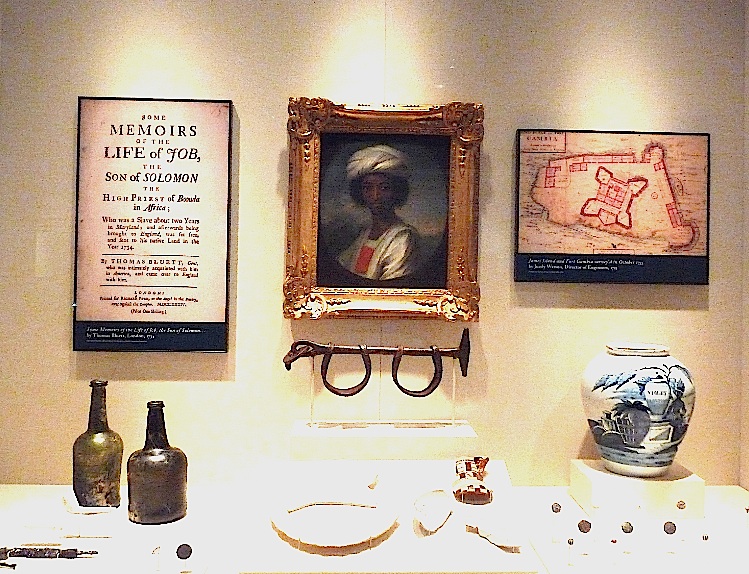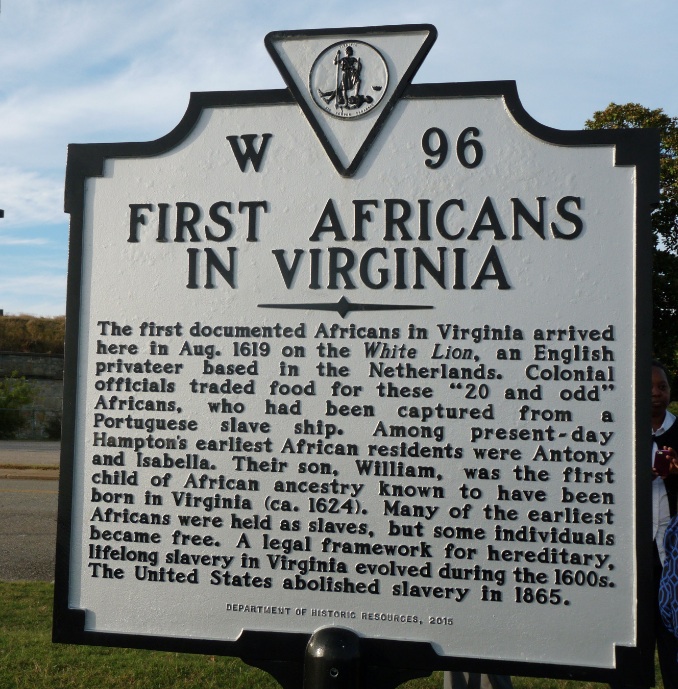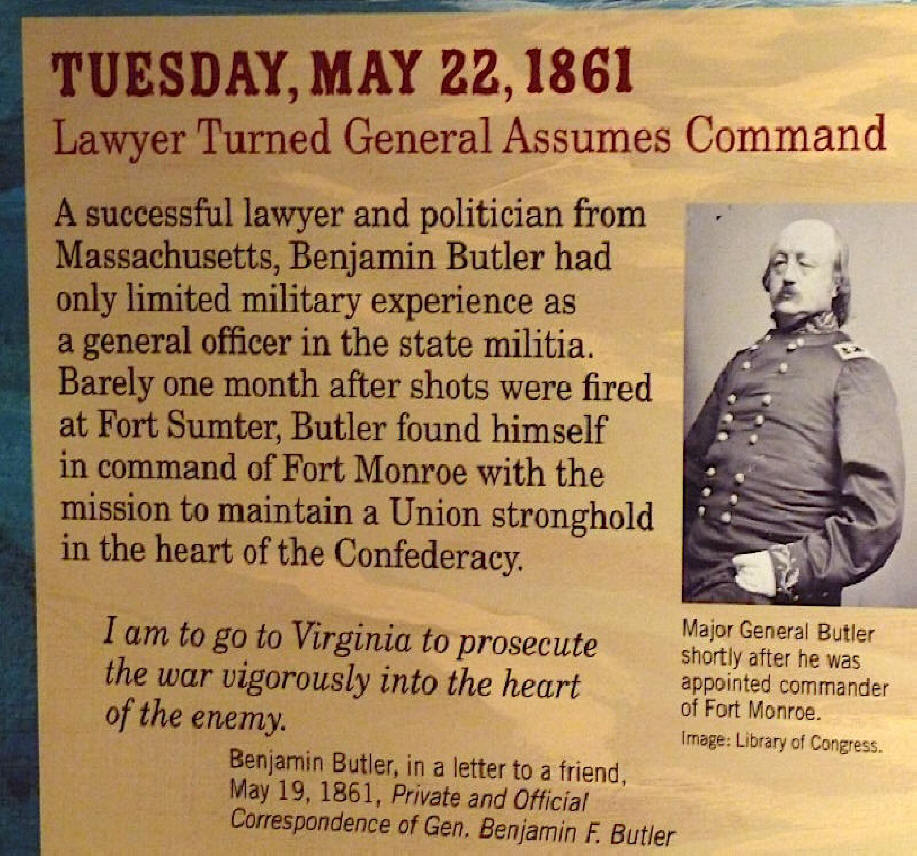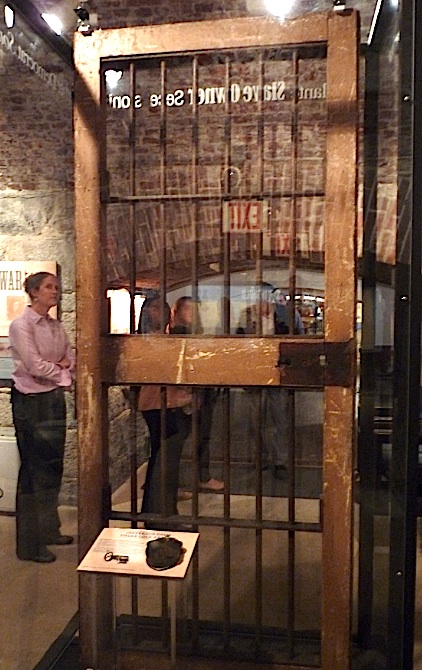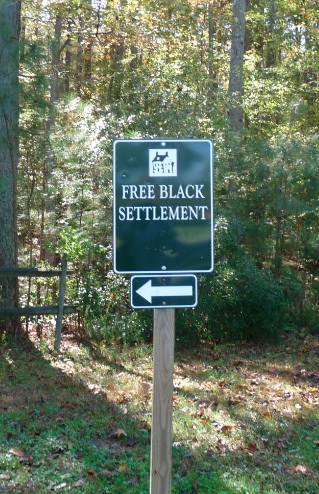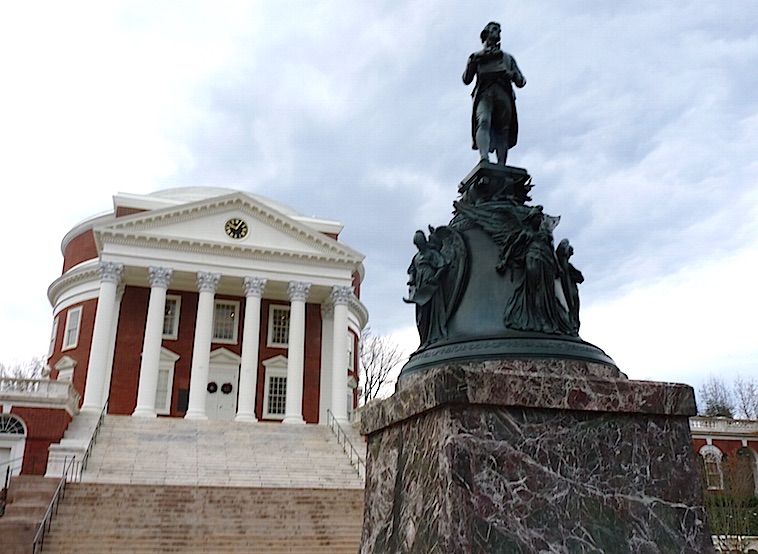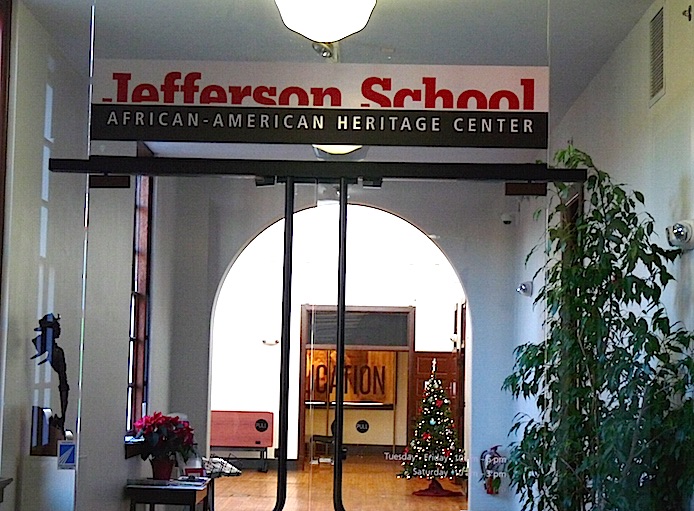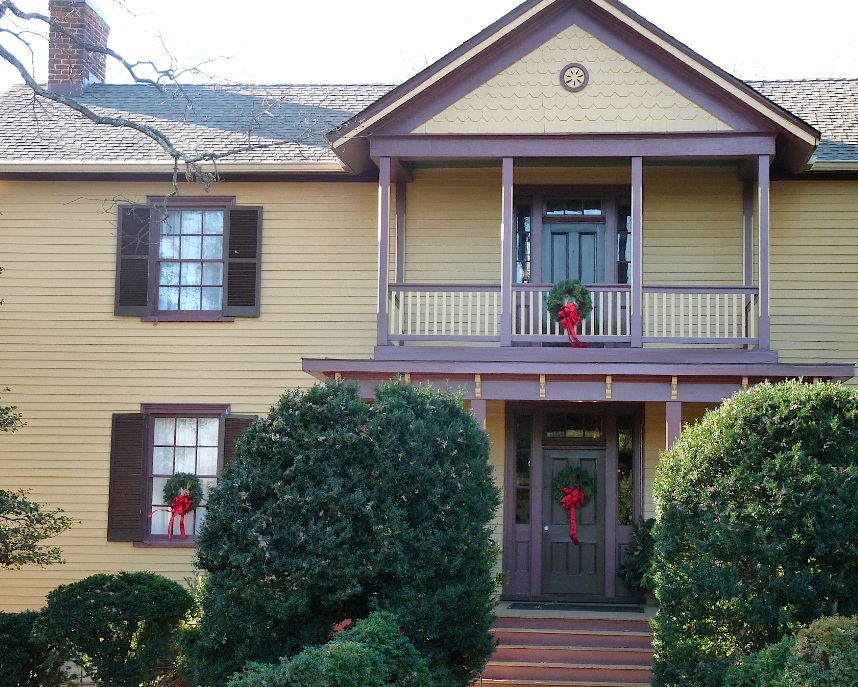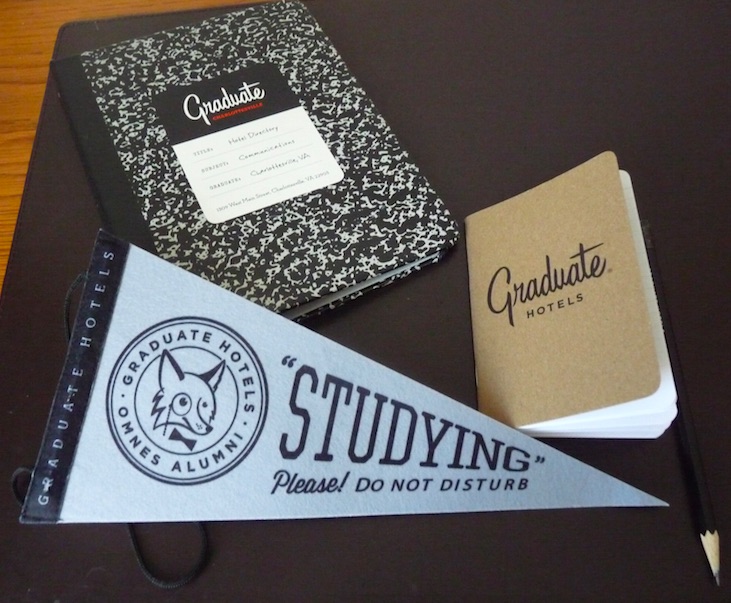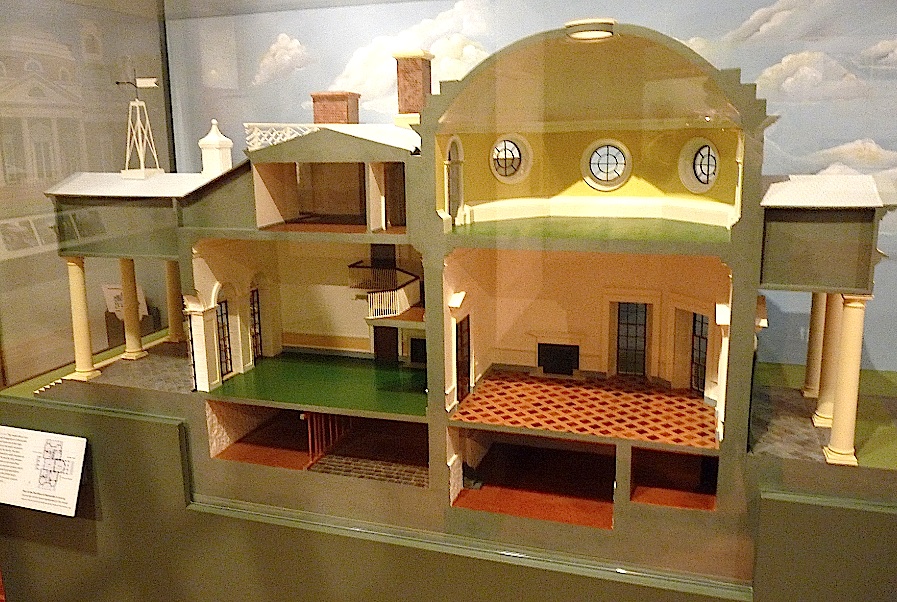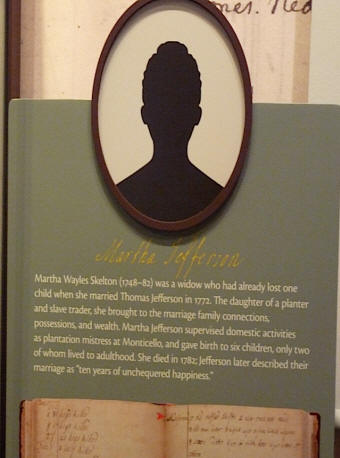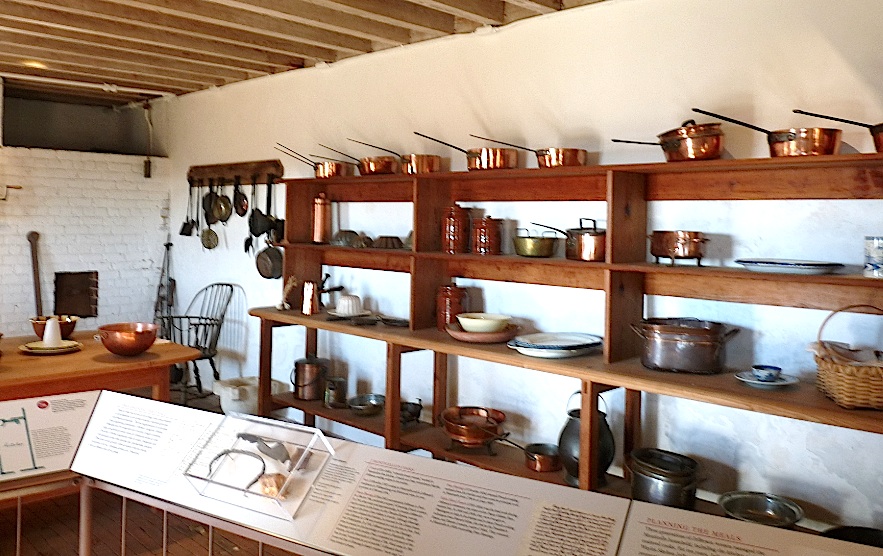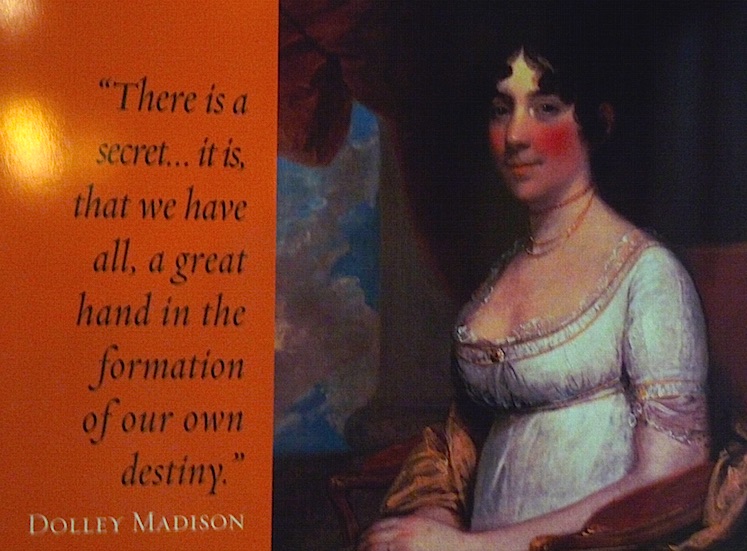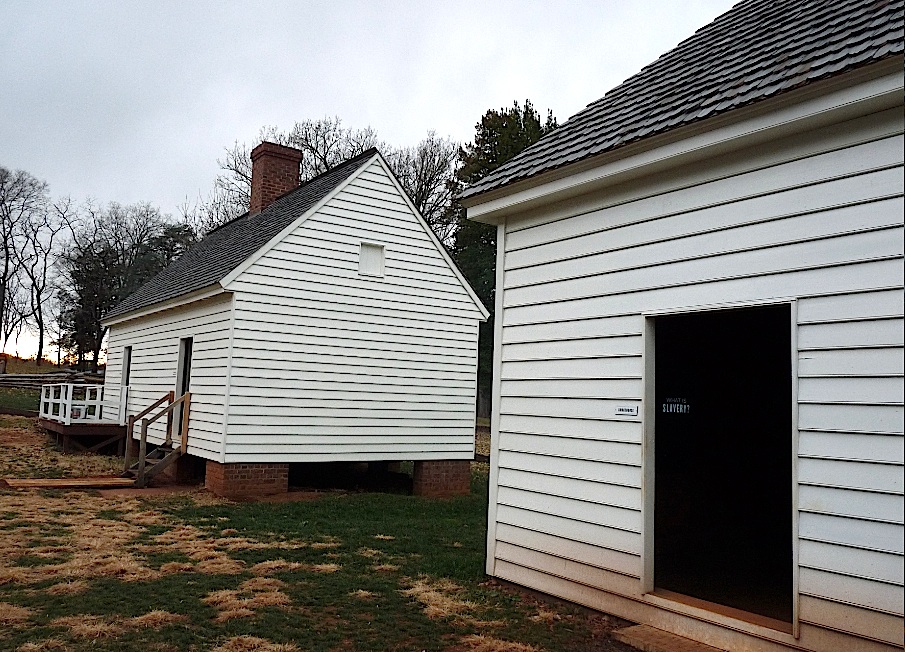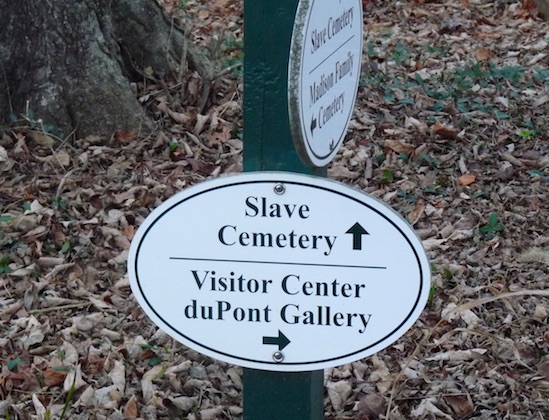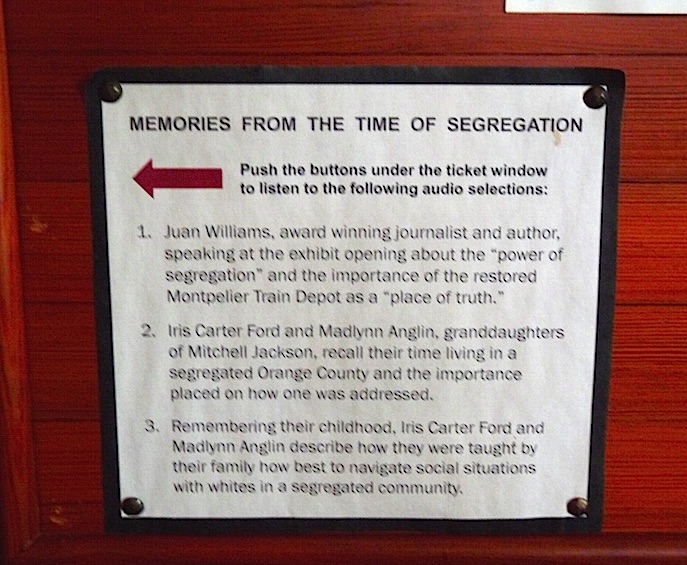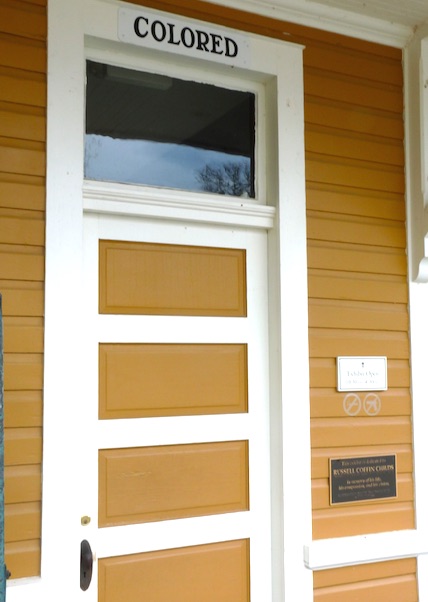
|
|
|
|
|
|
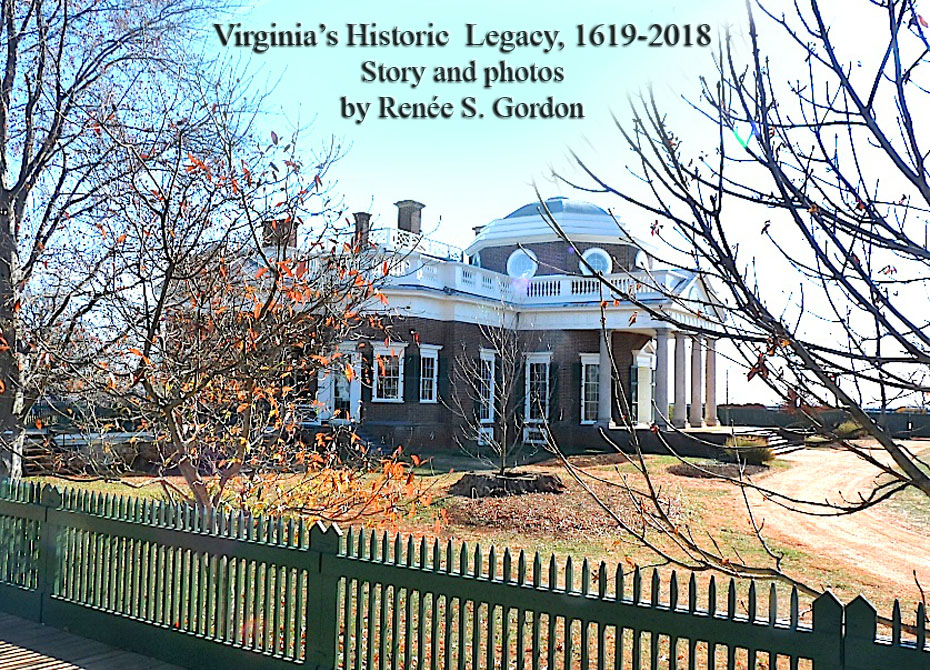
Many people regard Jamestown, VA as the birthplace
of the nation because it is the site of the first
permanent English settlement in North America. With a
deeper look one sees that its importance is much more
pervasive and it can better be described as the place
where our country's initial courtship took place. Here
that our nation's most important "first encounters"
occurred and roles and a hierarchy would be established
that would have a lasting effect. On May 14, 1607 three
ships, Susan Constant, Godspeed, and
Discovery, bearing
104 all male settlers, came ashore on land they called
"James Cittie".
www.virginia.org The Jamestown area was home
to approximately 14,000 Powhatan Indians under the
leadership of a paramount chief named Wahunsonacock or
Powhatan and contact was initially hostile. The
Powhatans resided in a series of villages where men
hunted and fished and women tended to other tasks.
The colony managed to survive
disease, famine, attack and rebellion and spread
eastward and in 1619 their perseverance would alter the
nation's destiny. The first representative legislative
assembly in North America was held from July 30-August
4th in the Jamestowne Church. The assembly was comprised
of men representing the 11 major settlements.
@commemorate2019 There were women in the
settlement from 1607 but their numbers were small and
their death rate was high. In 1619 the first recruitment
of women took place. They were unmarried and women with
special skills were specifically selected. More than 100
women arrived the following year making this a benchmark
in women's history.
The English warship, the
White Lion, sailed along the James River and landed at
Point Comfort in August 1619. There, "20 and odd
Negroes" were exchanged for food. Captured in West
Africa, they were to be transported aboard the
Portuguese slave ship São João Bautista to Mexico but
were taken aboard two English ships when the vessel was
captured. This exchange established the roots of the
African slave trade in the colonies and facilitated its
direction and entrenchment in the legal, economic and
social systems for the ensuing 400-years.
These events came together in Virginia in 1619 and set a course for the country that continues to resonate today. In 1619 the vast majority of the country was the colony of VA and the nation's early history played out there in the Historic Triangle and the state has done a remarkable job of researching, preserving, interpreting the locations and being inclusive of all ethnicities. American Evolution is a program designed to explore the 400-years of history and culture with an emphasis on democracy, diversity and opportunity. The state will commemorate the events that took place in Jamestowne 400-years ago. More than 20 events and 9 legacy projects have been planned for 2019. The events, beginning in 2018, provide a singular opportunity to interact with history from 1619 through the Civil War. Visitors can opt to tour chronologically, thematically or geographically. www.americanevolution2019.com
The natural place to begin is at the National Park Service, Colonial National Historical Park (COLO) and Jamestown Rediscovery Foundation (JRF). NPS-COLO is the only known publically accessible site that is authenticated as having been occupied by the first Africans in the English colonies. This active dig site of the entire settlement was first excavated in 1934. It was under the guidance of the segregated CCC and out of this activity came the first African American archeologists. @historicjamestowne
A civil rights grant has allowed the JRF to embark on the Angela Project, an effort to bring to life and substantiate through artifacts the life of Angela, a slave who arrived from Angola aboard the Treasurer. We know that Angela was part of the household of Captain William Pierce whose home is currently being excavated down to the 1619 level. The kitchen, where she worked, has been largely excavated and allows visitors to revisit Angela in a space she inhabited. Actual artifacts are exhibited. We do not know Angela's age or fate but know she walked these streets. #AmericanEvolution
Jamestown Settlement is an
interpretive campus that consists of both indoor and
outdoor interpretive exhibits that orient visitors to
the story of the nation from the perspective of defining
events within the Historic Triangle. Visits begin in the
museum with "1607: A Nation Takes Root". This docudrama
weaves the story of the interaction of the three
cultures that met here over the first two decades. The
story of Angela was filmed at the actual locations and
sets were built using traditional techniques by Angolans
in Africa. www.historyisfun
Jamestown Settlement
Exhibition Galleries are comprised of 30,000-sq.-ft. of
exhibition space displaying more than 500 artifacts,
interactive stations, films and life-sized dioramas
arrayed along the Great Hall that extends the entire
length of the building. Galleries are basically
chronological, open with an overview of Virginia and
then introduce the Powhatans, the Africans and the
English. The final interior exhibit is "The Legacy of
Jamestown". Of special note is the story of Njinga, the
Angolan queen who fought against slavery. Visitors continue to three
exterior exhibits, recreations of a 17th-century
Powhatan Indian Village, the Jamestown Fort and the
three English ships that arrived in Jamestown in 1607.
Each area has costumed interpreters who provide
information and present demonstrations in which guests
can participate.
Just as in 1699 Virginia's
capital was relocated from Jamestown to Williamsburg
your next stop should be Colonial Williamsburg, the
largest outdoor museum in the world. This living history
museum interprets the nation's 18th-century history
through the lens of the inhabitants, notable and
average, free and enslaved. There are more than 600
structures, 88 are authentic, 40 sites and numerous
tours and programs. During the era 50% of Williamsburg's
residents were black and their stories are interwoven
throughout. Tickets, maps and guides are available
at the Colonial Williamsburg Regional Visitor Center and
are an indispensible planning tool. Jamestown, Williamsburg, and
Yorktown are the three corners of Virginia's Historic
Triangle. The 23-mile Colonial Parkway connects the
sites and is marked, scenic and allows us to follow the
trail taken by the colonists.
www.virginia.org The Georgian Governor's
Palace in Williamsburg, Virginia was built between
1705-1720. It was the residence of seven Royal Governors
and two colonial governors, including Patrick Henry and
Thomas Jefferson, before the capital made its third move
to Richmond in 1780. During the Battle of Yorktown the
building functioned as a hospital and in the rear is a
graveyard containing more than 150 American soldiers.
Both Washington and Cornwallis were in Williamsburg
prior to Yorktown and we will follow their revolutionary
path. www.colonialwilliamsburg.com
The 80,000-sq.-ft., $50-million, American Revolution Museum at Yorktown opened in 2017 with more than 500 artifacts and stunning , creative, state-of-the-art technology. The campus, adjacent to Yorktown Battlefield, consists of interior galleries and exterior living history sites. The orientation film, "Liberty Fever", creates a stage for your entrance into the revolutionary period. Characters are drawn from patriots and rebels, all ethnicities and even a patriot's dog. www.historyisfun.org/yorktown-victory-center/new-yorktown-museum
Five major themes are
highlighted in the museum, The British Empire and
America, The Changing Relationship – Britain and North
America, Revolution, The New Nation and The American
People. Exhibits are enhanced with the inclusion of
dioramas, videos, artifacts and interactive kiosks.
Visitors can select a character to follow through the
Revolution. Highlights of the tour include a 1790
Wedgwood antislavery medallion, a first edition of
Phillis Wheatley's Poems on Various Subjects, Religious
and Moral and the 1733 portrait of Ayuba Suleiman
Diallo, one of the earliest portrait of an African who
was once enslaved in the colonies. Diallo, a learned
Muslim, actually traveled the Middle Passage twice and
his biography was published in 1734.
http://docsouth.unc.edu/neh/bluett/summary One of the compelling stories
related here is that of James Armistead Lafayette, an
enslaved man who served as the Marquis de Lafayette's
premiere spy. After the war he was not freed until the
Marquis wrote a letter in 1787. He took the Marquis'
last name.
Garbed colonists present
hands-on activities and interpret exterior exhibits.
These exhibits are roughly divided into two areas, the
Continental army encampment and the homefront. The
company encampment exhibits include the surgeons',
quartermasters' and officer's tents as well as those for
regular soldiers. There are also unique displays of a
regimental kitchen and women's living and working area.
Adjacent to the encampment is the revolutionary era farm
of Edward Moses consisting of a 34' X 16' farmhouse,
tobacco barn, 12' x 10' slave quarter and 20' x 16'
kitchen and garden. Old Point Comfort is the home
of Fort Monroe National Monument, a 63-acre moated
masonry fort completed in the 1830s on the site of
earlier defensive structures. The fort contains trails,
coastal panoramas, Old Point Comfort Lighthouse, a
National Historic Landmark District and the Casemate
Museum. Fort Monroe, referred to as
Freedom's Fortress, may be said to where slavery began
and where it ended. In August of 1619 the first
documented Africans arrived here, not Jamestown,
ultimately leading to the American form of formalized
slavery. A plaque on the spot where they landed was
placed there in 2015.
www.FMauthority.com
In May of 1861 three enslaved
men, Frank Baker, James Townsend and Sheppard Mallory,
rowed over to the Union held fort for sanctuary. The
next day their owner pressed for their return under the
Fugitive Slave Act of 1850. Major General Benjamin
Butler, a lawyer, stated that as Virginia had seceded
they were no longer subject to US laws and because the
Confederacy considered these men property and used them
in the war effort they should be considered "contraband
of war" and as such were not to be returned. Quickly
word spread and thousands of the enslaved made their way
to the fort and freedom.
Edgar A. Poe was stationed here from 1828-29 and Confederate President Jefferson Davis was imprisoned here after his capture. A tour of the Casemate Museum has a gallery on the African American story and a replica of Davis' cell. On November 1, 2011, President Obama signed a proclamation creating Fortress Monroe as his first national monument. www.nps.gov/fomr
Freedom Park is a real
Virginia gem filled with extraordinary experiences
including mountain bike and multi-use trails, wildlife
viewing, the Williamsburg Botanical Garden and GoApe
Treetop Adventure Course and Treetop Junior Course.
Additionally this 600-acre park preserve tells a
singular African American story. @goapeusa
William Ludwell Lee died at
the age of 29 and his will stated that the majority of
his slaves were to be freed on January 1st of the
following year. Those over 18 could stay on a designated
part of his land, where a free house was to be built for
them, if they wished. They could live there for 10-years
rent free. Those under 18 were to be taken north of the
Potomac and educated at his estate's expense. A portion
of Freedom Park is the site of that early black
settlement from 1803-1850. @jamescitycounty
Three cabins have been recreated to depict those years in the settlement. The homes are historically accurate and authentically furnished. The Freedom Park Interpretive Center provides information, recovered artifacts and information on the residents and their descendants. Kingsmill Resort & Spa is
perfectly situated for touring The Triangle and provides
a plethora of activities, dining options and
accommodations. The only AAA Four Diamond Condominium
Resort in historic Williamsburg, it offers cottages and
guestrooms. The views are awesome and the service
is nonpareil. www.kingsmill.com Eight Virginians have been
elected as President of the United States, four being
among the first five presidents, Washington, Jefferson,
Madison and Monroe and Virginia is a microcosm of both
colonial society and the American culture that flowed
from it. Great care has been taken to interpret history
holistically and there are numerous museums, historic
structures, tours and hundreds of markers to guide you
along. Every site with African American links relates
that part of the story highlighting the contradictions
of life and liberty in the US.
www.visitcharlottesville.org
The first land patents were
issued in 1727 but Albemarle County was officially
established in 1744 and named in honor of the second
Earl of Albemarle. Charlottesville became the county
seat with a main street that previously served as a
Monacan Indian trail from the Blue Ridge Mountains to
Richmond. The 50-acre, hilly, village was named after
Princess Charlotte who would later become wife of King
George III. Charlotte, considered the first black Queen
of England, was a direct descendant of the African
branch of the Portuguese Royal House.
www.albemarle.org
Peter Jefferson, father of Thomas, purchased land in 1737 and his son's ties to this region would be permanent. Thomas was born on a 200-acre tract of land on Shadwell plantation in 1743. The home burned down in 1770 but the name lives on. Shadwell's restaurant, winner of the 2017 OpenTable Diners' Choice Awards, is noted as serving the best seafood in Charlottesville. Their crab cakes are particularly popular and are made of lump crabmeat from the Chesapeake Bay with no bread filler. www.shadwellsrestaurant.com In 1987 University of
Virginia, UVA, was designated a UNESCO World Heritage
Site. Thomas Jefferson is credited with the concept and
design of the "Academical Village". He wanted to
encourage interdisciplinary studies and dialog. The
basic design included pavilions to function as
professor's housing, dining hotels, student single room
dormitories and the Rotunda. The Rotunda, modeled after
the Pantheon was to be the site of examinations, a
library, worship services and a focal point of the
university. The cornerstone of the $400,000 university
was laid on October 6, 1817, attended by Jefferson,
Madison and Monroe. www.virginia.edu UVA is currently committed to
completing "Virginia Mist", a granite memorial to the
enslaved laborers who were instrumental in building and
maintaining the university. The school owned 100 slaves,
rented about 40 and it is believed that throughout time
more than 4500 enslaved worked at UVA from 1817 until
1865. Two male slaves, used to clear the land, were the
first on site and by 1832 UVA owned four. Ultimately
there were approximately 1 slave per 20 students. Slaves
often accompanied the students and Edgar A. Poe during
his tenure rented a local slave from his master for
personal use. Poe's room, West Range #13, has been
restored to its 1826 appearance. Visitors can peer
through a glass door and press a button for narration.
www.virginia.edu/slaverymemorial
Jefferson School
African-American Heritage Center is housed within a 1926
building that was the only area high school for black
students. It was desegregated in 1959 and fully
integrated in 1967. The Center seeks to honor, preserve
and promulgate Charlottesville's African-American
legacy. The permanent galleries of Pride Overcomes
Prejudice are divided into, The Freedom Generation
(1865-1895), The Migration Generation (1895-1926), The
Community School Generation (1926-1939) and The Civil
Rights/Massive Resistance Generation (1939-1959) and The
Desegregation Generation (1959-1970). The Contemporary
Gallery presents a series of changing, provocative, art
exhibits. A schedule of events and programs is available
online. Visitors can obtain a copy of the African
American Trail for Albemarle/Charlottesville guide here.
It lists 21 sites, a map and biographies.
For
more details on Jefferson School. For school site
www.jeffschoolheritagecenter.org
Highland was the official
residence of the fifth President James Monroe from 1799
to 1823. Monroe was born in 1758, the second of 5
children, in Westmoreland, VA. In 1790 he purchased land
in Charlottesville that held a stone house and the land
upon which UVA stands. In 1793 he purchased 1,000-acres
from Jefferson and William Carter. His home, Highland,
later called Ash Lawn, offers a 40-minute, 28 site,
self-guided tour that includes a residence, gardens,
overseer's house and slave quarters. At one point there
were as many as 250 enslaved making Monroe one of the
county's largest slave owners. He believed in gradual
abolition but never freed any slaves of his own. The
reproduced slave quarters allow visitors to walk through
and view demonstrations of the work done by the
enslaved. www.highland.org Graduate Hotels are well
-curated hotels that marry the college experience, local
flavor and prime locations and the Graduate Hotel
Charlotte is no exception. The hotel is located a
5-minute walk from UVA and a short drive to the other
sites on this tour. From the moment you enter you
experience outstanding hospitality and a series of
touches that are reminiscent of college days. Room keys
are ID cards, pictures of well-known UVA graduates.
Accommodations are inviting and complete with Malin +
Goetz amenities and great mountain and UVA campus views.
There are two dining venues, the Heirloom Restaurant and
the Sheepdog Café. The rooftop Heirloom Restaurant
offers expansive views of the area and great food. The
Sheepdog is casual and has both indoor and outdoor
seating. A 24-hour fitness center is located on the
second floor and bikes are available. A stay here is a
great experience.
www.graduatehotels.com/charlottesville
Virginia is the 5th largest producer of wine in the US and there are 30 wineries within a 30-mike radius. Visitors can follow the Monticello Wine Trail so named because of Jefferson's love of winemaking and the fact that this is considered the birthplace of American winemaking. www.monticellowinetrail.com I have found that the way to
truly begin to understand the private side of an
individual's personality is to visit their home and peer
into their personal spaces and presidential homes are
very popular. The most visited of these homes is Mount
Vernon, residence of George and Martha. Mount Vernon is
located in Virginia 16-miles south of Washington, DC.
and approximately 90-miles south are the homes of the
third and fourth presidents, Thomas Jefferson and James
Madison. Their plantations,
Monticello and Montpelier,
are a few miles from Charlottesville and within close
proximity of one another.
www.visitcharlottesville.org Both estates strive to
present the personal and professional lives of these men
as well as the enslaved who were also residents. The
goal of both sites is to alter the prevailing narrative
and depict the slaves as individuals with families,
friends, desires, personal spaces and separate lives.
www.virginia.org
Monticello, the more famous
of the two, was the home of Thomas Jefferson from the
ages of 26-46 years old. Jefferson owned several
properties and approximately 600 slaves and most worked
at Monticello. Plan to spend several hours visiting all
the sites. Tours begin with an orientation film and
proceed into the gallery to view four exhibitions.
Shuttles take you around the grounds and to the mansion.
www.monticello.org
Most people are familiar with
the house because it is depicted on the nickel but they
have little idea of the intricacies of its design. The
interior of the home is 90% original as are 30% of the
glass and 60% of the furnishings. Slaves including
master carpenter John Hemings completed much of the
building. Your tour begins in the 2-story entry where
Burwell Colbert, the enslaved butler, greeted guests. It
is filled with artifacts, many Native American. Antlers
are the only original item, the remainder are
recreations made by descendants of the original
artisans.
Jefferson read and wrote in 7
languages and his library held over 700 books. The
displayed books are the same titles and editions as the
originals. Jefferson's bed was situated in an alcove and
on one side was his study, on the other side his
dressing room. He died in this room. In 1998 DNA linked
Sally Hemings, an enslaved woman, to the Jefferson
Family and it is believed he fathered her children.
Currently they are excavating a room that they believe
was hers and a Hemings Family Tour is offered.
www.home.monticello.org
The house was designed with
the dependencies all connected along passageways. The
most interesting areas are the Wine Cellar, the cook's
room and the kitchen, said to have been the best
equipped kitchen in America. Be certain to tour Mulberry
Row, where free and enslaved craftsmen lived, and the
slave cemetery. Your final stop will be Jefferson's
grave in the family cemetery.
Montpelier was the home of
James and Dolley Madison after his presidency. The
estate had been in his family since the 1730s and after
his birth in 1751 his father built the current house.
Rooms were added to the home and later he added wings on
either side. He and Dolley, America's first First Lady,
would live there until his death.
Dolley was a Quaker who wed
John Todd, a lawyer, at the age of 22. They resided at
4th & Walnut in Philadelphia from 1791-93. In 1793
Dolley's in-laws, husband and baby died. In 1794 Aaron
Burr introduced Madison to her and later that year they
wed. Tours of the Dolley Todd Madison House are offered
seasonally.
www.phlvisitorcenter.com/attraction/todd-house
James Madison was the 4th
President of the United States, the Father of the
Constitution, the Architect of the Bill of Rights and
owner of a plantation with more than 275 slaves. Touring
Montpelier is a totally unique experience because it
deals with all of the historic contradictions in our
culture. Madison and other founding fathers set forth
the ideal of freedom for everyone but slavery at its
height was a more than $3-billion industry and every
state benefitted from it. In most cases profit trumped
moral imperatives.
There are two exhibits and an
introductory film inside the Visitor's Center. Grills
Gallery features items connected with the Madisons
including Dolley's engagement ring. The Center's
Exchange Café offers a wonderful dining experience.
Their barbecue is ranked #1 in the area and 30th
nationwide. Everything is made using fresh local
produce. The home has been
architecturally restored and it is exciting to see and
learn the history. Madison retired here in 1817. By the
1830s Dolley bedroom was in the left wing and Madison,
who was ill, slept in a room behind the dining room. He
became paralyzed and was attended by Paul Jennings, a
slave, for many years. He died in 1836, the last of the
Founding Fathers. Dolley sold Jennings after Madison's
death to Daniel Webster. Webster allowed him to purchase
his freedom. He wrote a book, "A Colored Man's
Reminiscences of Madison". In 1844 Dolley sold the
2,650-acre estate for $35,000 to pay debts. Dolley died
in 1849 and was buried in Montpelier in 1858.
The story of slavery at
Montpelier and in society is told in the best exhibit I
have seen. Two cellar galleries interpret the private
and public lives of the slaves in state-of the-art
displays. "The Mere Distinction of Colour" is based on
oral histories of Montpelier's slaves. Uniquely the film
is presented as shadows on the walls evoking the
ephemeral existence of the enslaved. A slave cemetery
and six cabins dating from the 1700s are featured on the
tour. www.montpelier.org Montpelier/Highland is the
first historic site in the United States to offer
Augmented Reality tours using smart glasses that
showcase 3D reconstructions, animated characters,
videos, and text appearing on the landscape. Additional
areas on the our include walking trails, gardens,
200-acres of Piedmont Forest and archeological sites.
www.Highland.org
The George Gilmore Cabin is
located nearby. He was a slave born on the Montpelier
plantation. He purchased 19.11-acres of land and
his cabin is the nation's first Freedman's site.
Montpelier's 1910 Train Station has been restored to its
Jim Crow era appearance. Displays are based on oral
testimony by area residents.
The original 3000-acres that
is now the Clifton Inn belonged to Peter Jefferson and
later Thomas Randolph, Jefferson's son-in-law. The
building was a warehouse and the stone foundation is
part of the hotel's main house. This historic property
features luxurious accommodations in the main house and
in the dependencies. The restaurant offers gourmet
cuisine and exemplary service. This is perfect for
meetings, a romantic getaway, a retreat or reunion.
www.clifton-inn.com
|
Connect with us on:
American Roads and | ||
|
Public Disclosure--
Please Read I recently learned of a FTC law requiring web sites to let their readers know if any of the stories are "sponsored" or compensated. American Roads and Global Highways' feature writers are professional travel writers. As such we are frequently invited on press trips, also called fam trips. Most of the articles here are results of these trips. On these trips most of our lodging, dining, admissions fees and often plane fare are covered by the city or firm hosting the trip. It is an opportunity to visit places we might not otherwise be able to visit and bring you a great story. However, no one tells us what to write about those places. All opinions are 100% those of the author of that feature column. |
|||
|
Privacy Policy/ Archives /
Contributors /
Subscribe to
American Roads Books by
Kathleen Walls /
Contact /
Sponsor or Advertise/ American Roads & Global Highways Home Page
|









